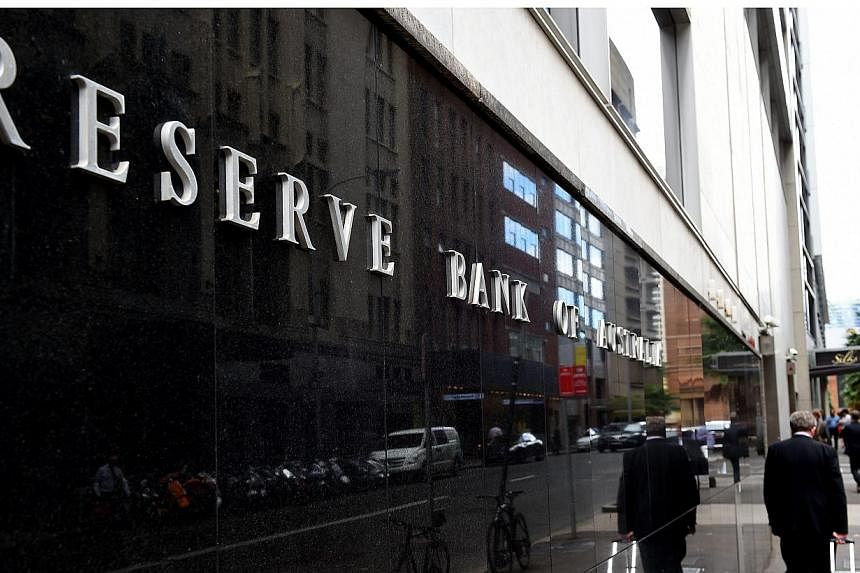SYDNEY (Reuters) - Australia's central bank kept interest rates steady for a second month on Tuesday to defy market pressure for a cut, but the stars are better aligned for a move in May.
The Reserve Bank of Australia's (RBA) decision to hold at 2.25 per cent surprised many investors who had wagered plunging prices for iron ore, the country's biggest single export earner, would force its hand. The local dollar shot up three quarters of a U.S. cent to US$0.7900 as a consequence.
"The Board judged that it was appropriate to hold interest rates steady for the time being," RBA Governor Glenn Stevens said in a terse eight paragraph statement.
But he also threw stimulus-hungry investors a bone. "Further easing of policy may be appropriate over the period ahead. The Board will continue to assess the case for such action at forthcoming meetings."
Indeed, the majority of analysts polled by Reuters had always favoured May as the likely window for the next easing.
A pause would allow policy makers to peruse key inflation figures for the first quarter due on April 22. These are likely to show headline consumer price inflation slowed to 1.2 per cent, a low seen only twice before in the last 15 years.
A cut at the May 5 meeting would also allow the RBA to expand on its reasoning in its quarterly statement on monetary policy, a weighty economic outlook due just three days later.
That was exactly the routine followed for its cut in February, and was the clear favourite among economists.
"We still expect the RBA to hit our 2 per cent 'target' in May, amid another likely downgrade to their forecasts of economic growth, and perhaps core inflation as well," said Scott Haslem, chief economist at UBS.
Many argue a further cut is needed merely to stop the local dollar from rising as central banks around the globe have eased further in recent months.
The RBA has been hoping that the U.S. Federal Reserve would begin lifting rates from June, and thus propel the U.S. dollar to new heights. Yet the prospects of an early Fed move seemed to dim following a surprisingly soft payrolls report for March.
A lower currency is sorely needed to help offset the impact of an inexorable decline in the price of iron ore, Australia's single largest export earner.
Australia's miners have massively expanded supply of the ore even as demand from Chinese steel makers slackened, sending its price to decade-lows. The result has been a blow to company profits, investment, employment and the government's tax take.
Miner Atlas Iron Ltd on Tuesday said it would consider selling assets and restructuring its capital base in a scramble to combat the impact of falling prices. Yet there are promising signs that stimulus is having the desired effect on consumer spending.
The Australian Bureau of Statistics said retail sales rose 0.7 per cent in February, well ahead of forecasts of a 0.4 per cent increase, while January was revised up.
Industry figures showed sales of new vehicles in both March and February were the strongest on record for those two months. Sales for March alone were 8 per cent ahead of the same month last year, led by red-hot demand for SUVs.
Low rates are also stoking investor demand for housing in Sydney, with prices up over 13 per cent over the past year, according to figures from property consultant RP Data.
So frothy was the market that regulators have tightened standards at banks and threatened to raise capital requirements for those lending too freely.

